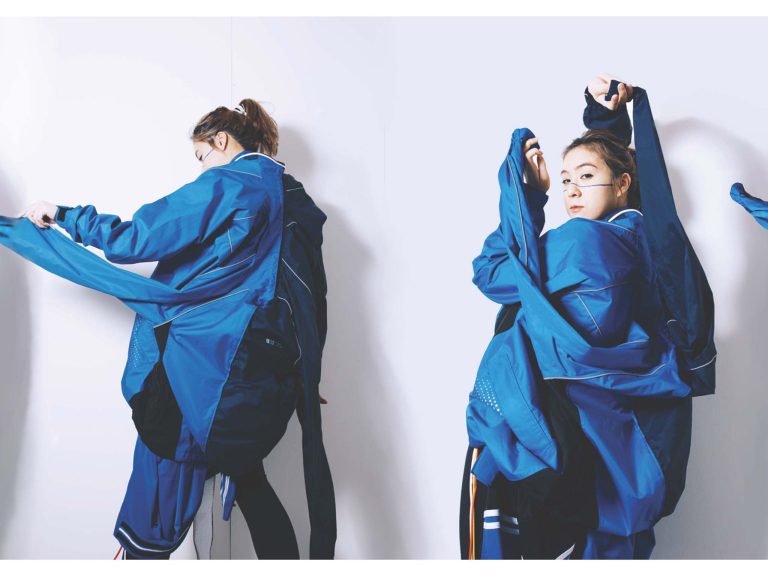Graduate Diploma in Art & Design
If you wish to study an Art or Design programme at Master’s level, but do not have a relevant undergraduate degree, or if you are an international student who has completed an Art & Design degree outside of the UK and are looking to study a Master’s in the same or related discipline within the UK, our Graduate Diploma in Art & Design course will help you to develop the skills and understanding needed for entry onto a Master’s programme.
The course is also suitable for anyone wishing to: develop new skills; establish fresh perspectives for understanding and producing contemporary Art & Design practice; for anyone desiring to overhaul an existing creative portfolio, with a view to further study at Master’s level, or with a view to investing in their creative and/or professional development.
Why choose Graduate diploma in art and design
Choose to study Graduate Diploma in Art and Design if you…
- would like to join an innovative course which encourages invention and discovery as the basis for developing creative practice within any field of Art and Design
- would like to develop your portfolio within a dynamic, project-led, transformative, creative studio environment
- would like to develop disciplinary skills and ambitions with contemporary relevance and interdisciplinary perspectives
- would like to develop potential lines for creative and critical enquiry, developing new awareness and ambitions for further research
- are wanting to switch disciplines between BA and MA
- have studied your BA outside the UK
- would like to improve an existing English Language Level
- would like to adapt to UK teaching styles and approaches
WHAT TO EXPECT
This programme is designed to help you develop the skills and perspectives required for future success at the Master’s level, and to bridge the gap between your existing ability/experience and the ambition to study within a postgraduate context, either at CSVPA or elsewhere.
Emphasis is placed on encouraging you to become an independent creative practitioner, who is both critically informed and professionally aware; who understands both historical and contemporary contexts for Art and Design; and who is able to operate with confidence within an English-speaking educational environment.
If required, the Graduate Diploma will help you to develop your existing English skills, in order to achieve the required level for direct entry onto a Master’s programme. The course will also provide you with experience of UK learning and teaching styles, help you develop your portfolio, building on existing skills, acquiring new ones, as well as developing potential lines for research with Art & Design.
There are three pathways within our Graduate Diploma programme, which are tailored to suit your disciplinary ambitions. You can choose between Art and Design (Fine Art, Product/Industrial Design, Spatial Design, Speculative Design), Fashion (Fashion Design, Fashion Branding, and Creative Communication), and Visual Communication (Graphic Design, Illustration, Animation, Photography, Moving Image).
Participation in a range of experimental/interdisciplinary labs, workshops, collaborations and exhibitions will enable the development of new skills, interdisciplinary perspectives, as well as valuable experience of working with others towards achieving common creative goals.
Throughout this intensive course, you will assess/evaluate your existing knowledge and skills (technical, conceptual, and contextual). Also, you will learn skills and references that can be applied to all areas of Art & Design, before focussing on any area of specific interest. You will encounter critical thinking and scholarly methods that will help you explore possible lines of research for your MA (and may feed into any study proposals that MA courses may require at the point of application. Specifically designed activities will provide you with an opportunity to develop your own research proposals, while still working on developing your portfolio.
You will be focussing on the development of your own creative practice, through detailed research and development, within an interdisciplinary creative environment. The final outcome is a self-initiated Master’s level project, which represents the culmination of your experience at CSVPA, as well as the platform for continued creative enquiry on a Master’s programme in the UK.
THE AWARD
Upon successful completion of the course, you will be awarded a Graduate Diploma in Art & Design, which is a Level 6 award, validated by Falmouth University, in association with CSVPA.
“By joining this course I have been able to explore art in any topic and any medium without restriction. I explored my ideas and pushed boundaries”
Mahija – Graduate Diploma in Art and Design
VIDEO
HIGHLIGHTS
OVERVIEW
Course Location
Cambridge
Course Length
1 year (2 terms/study blocks)
Course Start
September
Tutor Support
Specialist tutor support available 5 days a week.
Studio Access
Students have access to our studios 7 days a week, from 10:00 am to 8:00 pm, Monday to Friday, and 9:00 am to 5:00 pm at weekends.
Awarding Body
Falmouth University
How your Work is Assessed
Visual and written assignments and projects.
Guest Lecturers
The course is enriched by a programme of visiting lectures and workshops, delivered by a range of creative practitioners, from a wide range of disciplinary backgrounds and employment contexts within the creative industries.
How we Teach
Throughout this course you will be taught by dedicated, experienced, multi-skilled creative practitioners, with whom you will work on a range of practical and conceptual briefs, designed to challenge and stimulate your creativity, facilitated through studio practice sessions, technical workshops, lectures, seminars, tutorials, experimental ‘labs’, field trips, and collaborative projects. As you progress, you will enhance and deepen understanding of your own practice, acquire new skills and develop new methodologies for art & design, establish fresh contexts for your work (both academic and professional), as well as developing your ability to write critically about topics relevant to your own creative approaches and ambitions.
English Language
Up to 5 hours per week if required
Progression
Master’s programme in an Art & Design-related subject.
Careers
Previous students have gone on to work at Goblin Animation, Esquire Magazine, Vivienne Westwood, Fashion Crossover, Wyre, Gorilla TV, and many other companies within the creative industries
ENTRY
Age
20 years +
Educational Level
Students should normally hold a good Level 6 qualification (BA (Hons) degree or equivalent qualification); or a Level 5 international qualification (for example, 3 Years Diploma from a University in China) in an Art or Design or a closely related subject. Students who do not meet these entry requirements will still be considered on their own individual potential to succeed, which can be assessed through the interview process.
English Level for International Students
September start
IELTS 5.5+ (no element under 5.5)
Portfolio
A portfolio of work showing personal work, schoolwork, finished and prepared is required for this course. Your portfolio is the chance to show us your skills and your passion. Download our guide to see what we look for in a portfolio.
*See below for more details.
FACULTY
PORTFOLIO
Your portfolio is the chance to show us your passions, enthusiasms, and skills. As a guide, we would like to see some, but not necessarily all, of the following:
- Project and self-initiated work; to include work-in-progress and/or finished pieces, showcasing levels of visual skill and creativity
- evidence of primary and secondary research, which might include information derived from your own creative practice (drawing, photography, observation) as well as referenced information sourced from books, articles, magazines, exhibitions, films, museum visits, other cultural sources, or other academic contexts
- Your development process, as documented in sketchbooks or notebooks, including any reflective and/or evaluative thinking
- Personal ideas, proposed projects, and possible areas of interest, even if only speculative at present: if you can imagine it, how might you begin to visualise and reflect on it?
- Experimentation with a range of different media, materials, and disciplines, showing evidence of invention, discovery, and innovative thinking
- The breadth of interest in, and exploration of, a range of art and design disciplines
- Evidence of cultural awareness, identifying any social, cultural, philosophical, psychological, historical, anthropological, or scientific influences on your work
When submitting your portfolio digitally, please save it as a PDF, including a minimum of 10–15 pages, which showcase your creative practice, and which might additionally include pages from your sketchbook. Don’t forget to provide titles and short introductions to your projects, as well as annotations for images. You may know the contexts for your work, but don’t assume that someone reviewing your portfolio will have access to the same knowledge as you!
At the same time, don’t swamp your visual practice with descriptions – aim to strike a balance between the visual and textual elements of your portfolio, combining them in order to communicate your passions, skills, insights, and creativity.
There is no such thing as a ‘perfect’ portfolio. The very best portfolio is the one that best reflects you and your work, at this present point in time.
PORTFOLIO GUIDE
What We Look for in an Portfolio guide, to prepare fully for your audition at CSVPA.
RELATED COURSES
TALK TO US
Do you want to find out more about CSVPA? Talk to our student advisors now.















